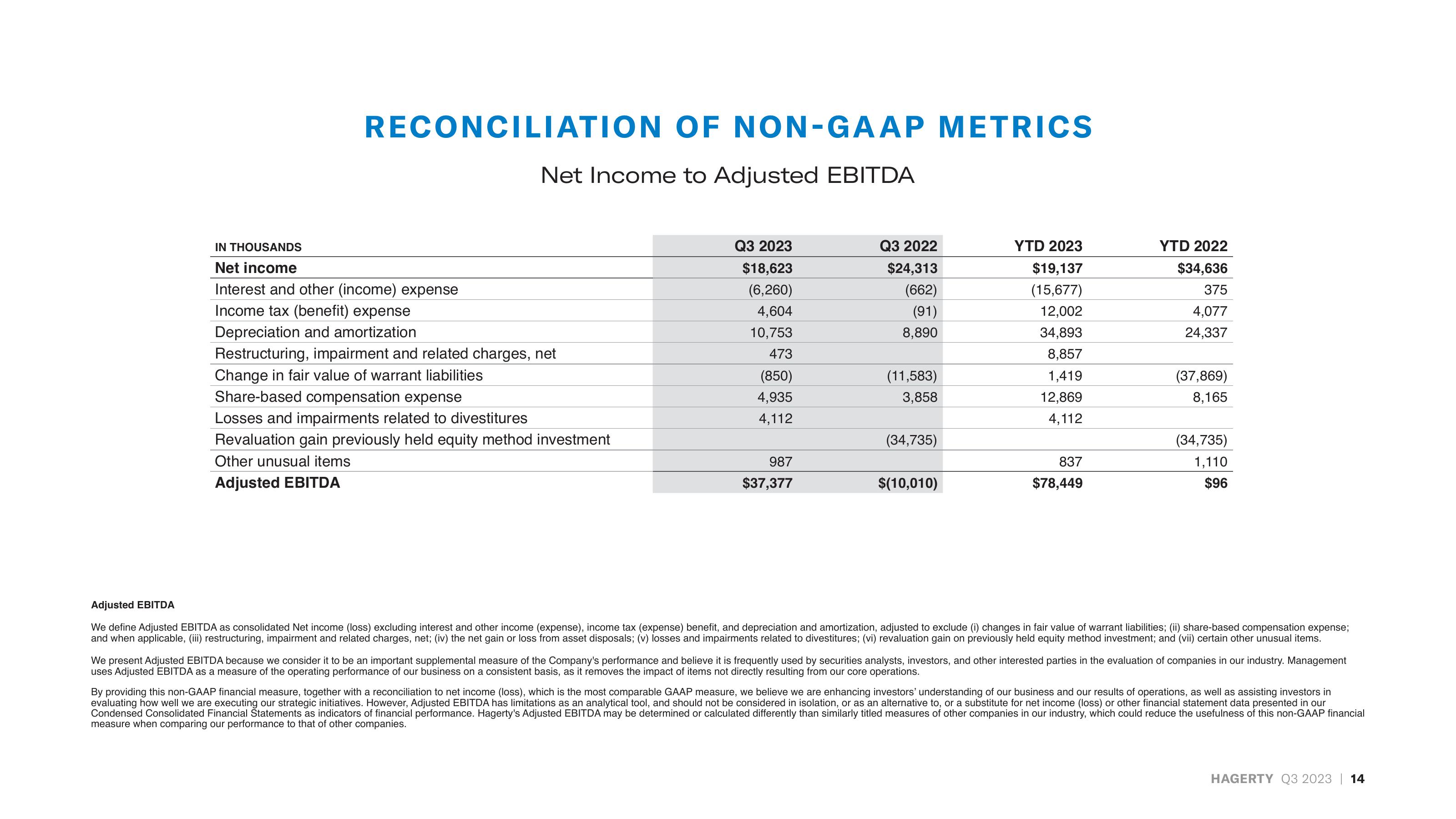Hagerty Investor Presentation Deck
RECONCILIATION OF NON-GAAP METRICS
Net Income to Adjusted EBITDA
IN THOUSANDS
Net income
Interest and other (income) expense
Income tax (benefit) expense
Depreciation and amortization
Restructuring, impairment and related charges, net
Change in fair value of warrant liabilities
Share-based compensation expense
Losses and impairments related to divestitures
Revaluation gain previously held equity method investment
Other unusual items
Adjusted EBITDA
Q3 2023
$18,623
(6,260)
4,604
10,753
473
(850)
4,935
4,112
987
$37,377
Q3 2022
$24,313
(662)
(91)
8,890
(11,583)
3,858
(34,735)
$(10,010)
YTD 2023
$19,137
(15,677)
12,002
34,893
8,857
1,419
12,869
4,112
837
$78,449
YTD 2022
$34,636
375
4,077
24,337
(37,869)
8,165
(34,735)
1,110
$96
Adjusted EBITDA
We define Adjusted EBITDA as consolidated Net income (loss) excluding interest and other income (expense), income tax (expense) benefit, and depreciation and amortization, adjusted to exclude (i) changes in fair value of warrant liabilities; (ii) share-based compensation expense;
and when applicable, (iii) restructuring, impairment and related charges, net; (iv) the net gain or loss from asset disposals; (v) losses and impairments related to divestitures; (vi) revaluation gain on previously held equity method investment; and (vii) certain other unusual items.
We present Adjusted EBITDA because we consider it to be an important supplemental measure of the Company's performance and believe it is frequently used by securities analysts, investors, and other interested parties in the evaluation of companies in our industry. Management
uses Adjusted EBITDA as a measure of the operating performance of our business on a consistent basis, as it removes the impact of items not directly resulting from our core operations.
By providing this non-GAAP financial measure, together with a reconciliation to net income (loss), which is the most comparable GAAP measure, we believe we are enhancing investors' understanding of our business and our results of operations, as well as assisting investors in
evaluating how well we are executing our strategic initiatives. However, Adjusted EBITDA has limitations as an analytical tool, and should not be considered in isolation, or as an alternative to, or a substitute for net income (loss) or other financial statement data presented in our
Condensed Consolidated Financial Statements as indicators of financial performance. Hagerty's Adjusted EBITDA may be determined or calculated differently than similarly titled measures of other companies in our industry, which could reduce the usefulness of this non-GAAP financial
measure when comparing our performance to that of other companies.
HAGERTY Q3 2023 | 14View entire presentation